Which dishwasher is best 45 or 60 cm wide
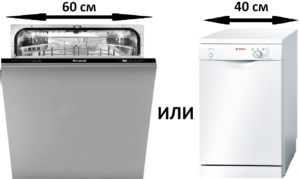 Thinking about buying a dishwasher, the housewives immediately imagine how they will lie on the sofa, while the appliance will wash plates and pans for them. Solid pluses: a whole manicure, healthy skin of the hands, and you don’t need to stand for half an hour at the sink, playing with a sponge and a towel. Everything would be fine, but the time comes when you need to choose a dishwasher and this is where the question arises: which dishwasher is better? First of all, are we interested in size, 45 or 60 cm? What experts and experienced housewives think about this, we will figure it out together.
Thinking about buying a dishwasher, the housewives immediately imagine how they will lie on the sofa, while the appliance will wash plates and pans for them. Solid pluses: a whole manicure, healthy skin of the hands, and you don’t need to stand for half an hour at the sink, playing with a sponge and a towel. Everything would be fine, but the time comes when you need to choose a dishwasher and this is where the question arises: which dishwasher is better? First of all, are we interested in size, 45 or 60 cm? What experts and experienced housewives think about this, we will figure it out together.
Think about the selection criteria
Experienced housewives who have been using the dishwasher for more than a year, are advised to think very carefully about the size of your future "home assistant". Suppose that you have not taken any steps yet, but only thought about buying a dishwasher, what should you think about first? Of course, about where you will put your new equipment and how to connect it.
Many in apartments and houses have small kitchens, you have to save space. Quite often, there is simply nowhere to put a full-sized 60 cm dishwasher, and in this case the dilemma will resolve itself, because the 45 cm machine is narrower and it is easier to find a place. If there is potentially room for a typewriter of 45 or 60 cm, you will have to determine other selection criteria.
- How many people are in the family and how often do you receive guests. A very important criterion that determines the intensity
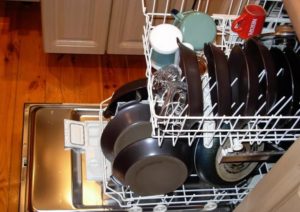 load on the dishwasher. Everything is simple here. If you often wash a huge amount of dishes, then you need a dishwasher with the maximum possible load, and this is a 60 cm machine.
load on the dishwasher. Everything is simple here. If you often wash a huge amount of dishes, then you need a dishwasher with the maximum possible load, and this is a 60 cm machine. - The composition of the dishes. Quite often you have to wash not only plates, glasses and spoons with forks. Dirty dishes have large salad bowls, baking trays, large pots and pans. A full-sized dishwasher is best for overall tableware.
- Water consumption and energy consumption. I would like to buy a functional, but at the same time the most economical machine. To do this, you will have to look into the passports of specific models of dishwashers and find information on energy consumption and water consumption there.
The consumption of water and electricity depends not so much on the size of the dishwasher as on the programs and functions built into it.
- The location of the baskets for dishes. The quality of the sink depends on how you make the dishes in the baskets; accordingly, the more convenient these baskets are, the easier it is to handle the dishwasher. The manufacturer is very careful in designing baskets for dishwashers, and many models are now equipped with adjustable baskets. Now the user himself can set them as needed so that the dishes fit normally.
- Composition of programs and functions. Every modern dishwasher should have an impressive array of useful programs and features. In particular, the half-load mode, when the dishwasher spends half as much water and energy on less dishes.

- Noise. If the dishwasher during operation produces a noise of more than 55 dB, it is better not to take such a dishwasher. The normal noise range is 45-52 dB.
- Manufacturer. For many, the brand of the dishwasher and the country of assembly are of great importance. In this sense, in the first place are German brands and dishwashers assembled in Germany, in the last place are “home helpers” assembled in Russia. China is now somewhere in the middle. If you seriously think about the issue, which company to buy a dishwasher, read the article of the same name.
- Protection. Good dishwashers are protected from leaks, the intervention of children. They are equipped with filters that will protect the machine, if substandard water is supplied to the water supply.In our opinion, one should not refuse such pleasant additions, moreover, they are very useful.
Here is the main list of criteria that you can rely on when choosing a dishwasher. Of course, far from all the criteria relate to the question: a dishwasher of 45 or 60 cm is worthy of choice, but if you look at these very criteria in combination, you will get a picture of the ideal machine, which you will look for on store shelves.
Advantages and disadvantages of the machine 45 cm
Now it remains for us to highlight the merits and demerits of each of the presented “size ranges” of dishwashers, so that you get an even more complete picture of what type of equipment you prefer. We will start with the pros and cons of a dishwasher, the width of which is 45 cm.
Do not be surprised if, somewhere in the texts of the remaining points, the thoughts indicated earlier are repeated. This will be done by us intentionally in order to correctly place accents and present the material in a more visual form for easier assimilation by the reader. So, the pros that the car has 45 cm.
- Compact and ergonomic housing. In this case, it is not so much about saving space, although this is very important, but about the ergonomics of placing equipment within the kitchen space. In a small kitchen, a 45 cm dishwasher with a narrow body looks much more organic, moreover, it is somewhat easier to integrate into furniture than a full-size one.
The narrow dishwasher fits easily into standard cabinet sizes. You don’t even need to invent anything special.
- A more diverse lineup. Marketers have long noticed that narrow dishwashers sell better, so the manufacturer, in response to this fact, is constantly expanding the offer of machines with a case width of 45 cm. Hence the conclusion: for narrow dishwashers the model range is wider, there is more choice, which means it will be easier to choose the “perfect assistant” for yourself.
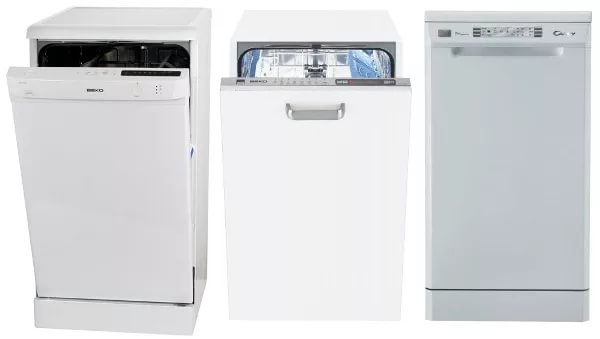
- It’s easier to choose a finished facade. Due to the fact that built-in dishwashers with a case width of 45 cm are much more popular, they also have ready-made facades of almost any color and texture. For a 60-cm dishwasher, the facade must be ordered, and this is an extra "headache".
Add to the above pluses the opportunity to save the extra 15 cm of space in your kitchen, and it turns out that exactly 45 cm model says a lot in favor of buying. However, let's not rush to conclusions, let's talk about the minuses of narrow cars.
- Some dishes do not really fit into it. Try to cram a standard-sized baking sheet or a huge pan into a narrow hopper? Even if you succeed, you won’t be able to put anything else there. But large greasy baking sheets, pots and pans, it is very difficult to wash with your hands. The conclusion suggests itself.
- Service life and technical solutions. In the narrow case of the dishwasher, the parts are more compact. Applied technical solutions, which are more likely to cram more elements into a small case, and not to extend the life of the machine. Statistics is inexorable, narrow cars serve on average 2-2.5 years less than full-size ones.
- Not suitable for a large family. In a narrow dishwasher, much less dishes fit in than in a full-sized machine - this is a fact. If you have more than 4 people living in your house, a narrow machine will not suit you.
Pros and cons of dishwashers 60 cm
With narrow models, everything is clear. Although manufacturers along with marketers do not get tired of praising them, such dishwashers have obvious disadvantages to be reckoned with. And what about standard dishwashers? In our opinion, the fact that dishwashers with a width of 60 cm are considered standard and traditionally used throughout the world already says a lot. They have a number of undeniable advantages.
- Large capacity.If you need to stuff a whole mountain of plates and glasses - please, a couple of pots and a baking sheet - also without problems. At the same time, you don’t even have to puzzle over how and what to put in order to better launder.
A full-size dishwasher includes 16 or more sets of utensils.
- High quality dishwashing. The freer the dishes are, the higher the quality of the wash. In a narrow hopper it’s hard
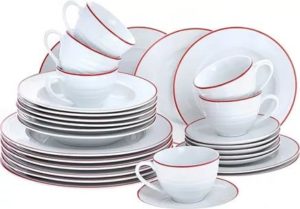 to achieve this, in a 60-centimeter model this is elementary.
to achieve this, in a 60-centimeter model this is elementary. - The presence of modes to save water and electricity. Large dishwashers used to be uneconomical. Now with the advent of electronic control systems, programs appear that allow you to half-load the machine and set the program to half load, and this is a net savings.
Disadvantages of large dishwashers are also available, and they are related to the size of the housing of the "home assistant". It’s problematic to cram it into a small kitchen, and there’s nothing to say about embedding. The 60 cm built-in machine will take up a lot of space. But if you have a large kitchen, then these shortcomings automatically lose their significance.
Interesting:
1 reader comment
Add a comment Cancel reply
Headings
Washing machine repair


For buyers
For users

Dishwasher






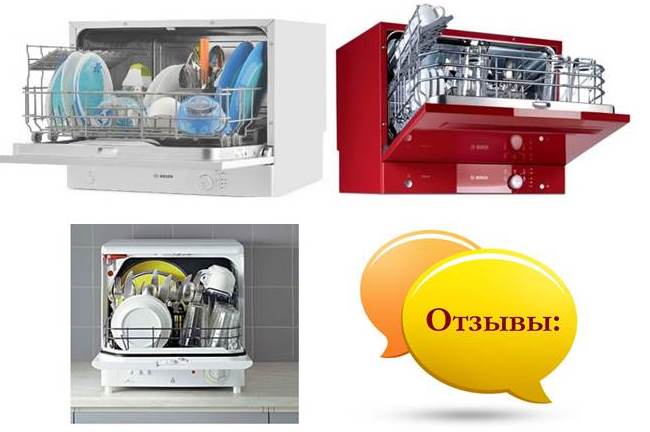











Yes, someone like, probably. I personally do not need 60 cm, a hotpoint of 45 is enough. Yes, it’s more convenient to put baking sheets in a wider one, for example. But not so often I use the oven.